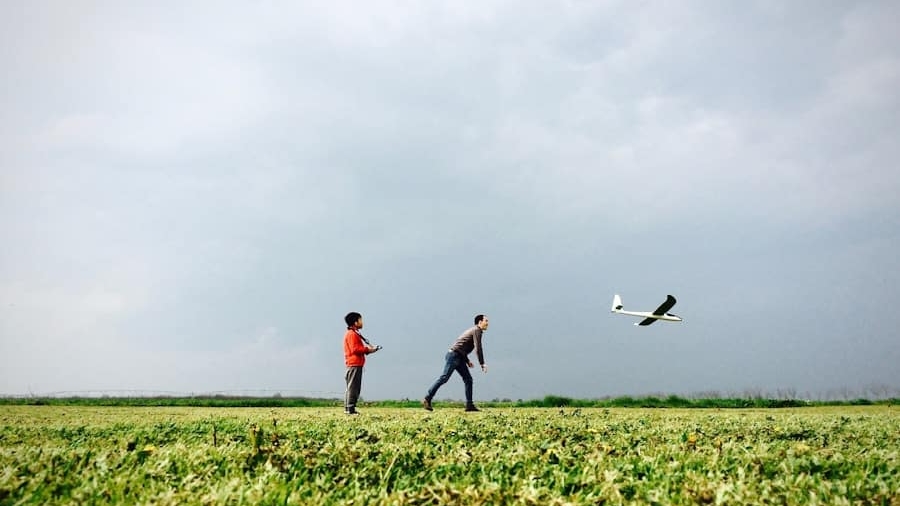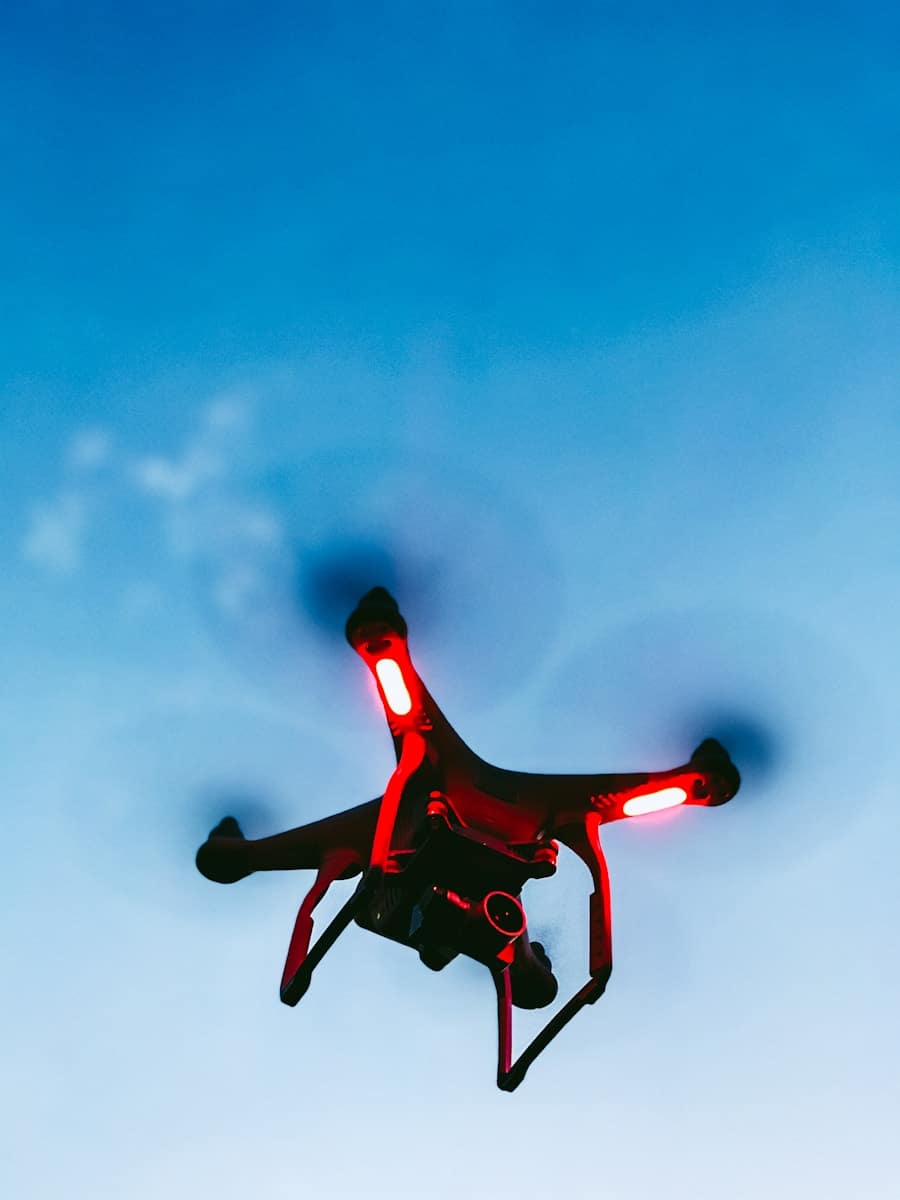The advent of artificial intelligence (AI) has revolutionized numerous sectors, and disaster response is no exception. In recent years, the integration of AI with drone technology has emerged as a powerful tool for managing the complexities associated with natural disasters. These AI-driven drones are equipped with advanced sensors, machine learning algorithms, and real-time data processing capabilities, enabling them to perform tasks that were once deemed impossible or too dangerous for human responders.
From assessing damage in the aftermath of a hurricane to locating survivors in the rubble of an earthquake, these drones are transforming how we approach disaster management. The increasing frequency and intensity of natural disasters due to climate change have underscored the need for innovative solutions in emergency response. Traditional methods often fall short in terms of speed and efficiency, leading to delays that can cost lives.
AI-driven drones offer a promising alternative, capable of rapidly gathering and analyzing data from affected areas. Their ability to operate in hazardous environments without putting human lives at risk makes them invaluable assets in disaster scenarios. As we delve deeper into the role of AI in disaster response, it becomes clear that these technologies are not just enhancing existing practices but are fundamentally reshaping the landscape of emergency management.
Key Takeaways
- AI-driven drones play a crucial role in natural disaster response by providing real-time data and imagery for decision-making and resource allocation.
- AI enhances disaster response by enabling drones to autonomously navigate and identify areas of need, reducing human error and response time.
- Drones offer advantages in natural disaster response such as accessing hard-to-reach areas, conducting aerial surveys, and delivering aid and supplies to affected populations.
- AI-driven drones are instrumental in search and rescue operations by using thermal imaging and AI algorithms to locate and assist survivors in disaster-stricken areas.
- AI-driven drones facilitate damage assessment by capturing high-resolution images and using AI to analyze and prioritize areas for immediate attention and resource allocation.
The Role of AI in Disaster Response
AI plays a multifaceted role in disaster response, enhancing decision-making processes and operational efficiency. One of the primary functions of AI in this context is data analysis. During a disaster, vast amounts of data are generated from various sources, including social media, satellite imagery, and sensor networks.
AI algorithms can sift through this data at unprecedented speeds, identifying patterns and extracting actionable insights that can inform response strategies. For instance, machine learning models can predict the movement of wildfires or flooding based on historical data and real-time environmental conditions, allowing responders to allocate resources more effectively. Moreover, AI enhances situational awareness by integrating data from multiple sources into a cohesive operational picture.
This capability is particularly crucial during chaotic disaster scenarios where information is often fragmented and unreliable. By employing AI-driven analytics, emergency management teams can gain a clearer understanding of the situation on the ground, enabling them to make informed decisions about resource deployment and evacuation plans. The synergy between AI and drones amplifies this effect, as drones can provide real-time aerial imagery and environmental data that AI systems can analyze to generate insights quickly.
Advantages of Using Drones in Natural Disaster Response
The advantages of utilizing drones in natural disaster response are manifold, beginning with their ability to cover large areas quickly and efficiently. Traditional ground-based assessments can be time-consuming and labor-intensive, often hampered by debris or hazardous conditions. Drones can traverse these obstacles with ease, providing aerial views that facilitate rapid assessments of affected regions.
This capability is particularly beneficial in scenarios where time is of the essence, such as during flooding or after earthquakes when every minute counts in locating survivors. Additionally, drones equipped with high-resolution cameras and thermal imaging technology can capture detailed images that reveal critical information about the state of infrastructure and the environment. For example, after a hurricane, drones can identify damaged buildings, downed power lines, and flooded areas, allowing emergency responders to prioritize their efforts effectively.
The ability to gather such detailed data not only aids in immediate response efforts but also contributes to long-term recovery planning by providing baseline information for future assessments.
AI-Driven Drones in Search and Rescue Operations
Search and rescue operations are among the most critical aspects of disaster response, where every second can mean the difference between life and death. AI-driven drones have proven to be invaluable tools in these high-stakes situations. Equipped with advanced imaging technology and AI algorithms capable of facial recognition and object detection, these drones can locate individuals trapped under debris or lost in remote areas more efficiently than traditional methods.
For instance, during the aftermath of an earthquake, drones can be deployed to scan affected neighborhoods systematically. By analyzing thermal signatures or using infrared cameras, they can detect body heat from survivors who may be trapped beneath rubble.
This targeted approach not only saves time but also maximizes the chances of successful rescues.
AI-Driven Drones for Damage Assessment
Damage assessment is a critical component of disaster response that informs recovery efforts and resource allocation. AI-driven drones excel in this area by providing comprehensive aerial surveys that capture extensive data on infrastructure damage. Equipped with high-resolution cameras and LiDAR technology, these drones can create detailed 3D models of affected areas, allowing responders to visualize the extent of destruction accurately.
For example, after a hurricane strikes a coastal community, drones can be deployed to assess damage to homes, roads, and utilities. The data collected can be processed using AI algorithms that classify damage levels—ranging from minor to severe—enabling emergency management teams to prioritize repairs based on urgency. This systematic approach not only streamlines recovery efforts but also aids in insurance assessments and funding applications for rebuilding initiatives.
AI-Driven Drones in Delivering Aid and Supplies
In addition to their roles in assessment and rescue operations, AI-driven drones are increasingly being utilized for delivering aid and supplies during disasters. This capability is particularly advantageous in scenarios where traditional transportation routes are compromised or inaccessible due to debris or flooding. Drones can transport essential supplies such as food, water, medical kits, and communication devices directly to those in need.
For instance, during the 2020 COVID-19 pandemic, drones were employed in various regions to deliver medical supplies to remote areas cut off from conventional supply chains. In disaster scenarios like earthquakes or hurricanes, this same technology can be adapted to deliver life-saving resources quickly and efficiently. The integration of AI allows for optimized flight paths that consider real-time weather conditions and obstacles, ensuring that deliveries reach their destinations safely and promptly.
Challenges and Limitations of AI-Driven Drones in Disaster Response
Despite their numerous advantages, the deployment of AI-driven drones in disaster response is not without challenges. One significant limitation is regulatory hurdles surrounding airspace management and drone operations. Many countries have strict regulations governing drone flights, particularly in urban areas or near disaster sites where air traffic may be congested or restricted.
Navigating these regulations can delay deployment and limit the effectiveness of drone operations during critical moments. Another challenge lies in the technological limitations inherent in drone systems themselves. While advancements have been made in battery life and payload capacity, many drones still face constraints that limit their operational range and duration.
In large-scale disasters where affected areas may span vast distances, these limitations can hinder comprehensive assessments or timely deliveries. Additionally, reliance on technology raises concerns about cybersecurity; as drones become more integrated into disaster response frameworks, they may become targets for malicious actors seeking to disrupt operations.
Future Developments and Implications for AI-Driven Drones in Disaster Response
Looking ahead, the future of AI-driven drones in disaster response appears promising as technology continues to evolve. Innovations such as improved battery technologies could extend flight times significantly, allowing drones to cover larger areas without needing to return for recharging. Furthermore, advancements in AI algorithms will likely enhance data processing capabilities, enabling even faster analysis of aerial imagery and environmental conditions.
The integration of autonomous flight capabilities is another area poised for growth. As drones become more adept at navigating complex environments without human intervention, their utility in disaster scenarios will increase exponentially.
As these technologies advance, ethical considerations will also come into play. The use of AI-driven drones raises questions about privacy and surveillance, particularly when operating in populated areas during disasters. Striking a balance between effective response efforts and respecting individual privacy rights will be crucial as these technologies become more prevalent.
In conclusion, the integration of AI-driven drones into natural disaster response represents a significant leap forward in emergency management capabilities. Their ability to gather real-time data, conduct search and rescue operations, assess damage efficiently, and deliver aid makes them indispensable tools in modern disaster response strategies. As technology continues to evolve and address existing challenges, the potential for these drones to save lives and enhance recovery efforts will only grow stronger.
A related article to How AI-Driven Drones Are Assisting in Natural Disaster Response is “MyAI Account: The Future of Artificial Intelligence Technology” which discusses the advancements in AI technology and how it is being utilized in various industries. To learn more about the latest innovations in AI, you can visit enicomp.com/myai-account.
FAQs
What are AI-driven drones?
AI-driven drones are unmanned aerial vehicles equipped with artificial intelligence technology that allows them to perform tasks autonomously, such as navigating through environments, identifying objects, and making decisions based on the data they collect.
How do AI-driven drones assist in natural disaster response?
AI-driven drones can be used in natural disaster response to assess damage, search for survivors, deliver supplies, and provide real-time data to emergency responders. Their ability to navigate through challenging environments and collect data makes them valuable tools in disaster situations.
What are the benefits of using AI-driven drones in natural disaster response?
Using AI-driven drones in natural disaster response can help improve the speed and efficiency of search and rescue operations, provide valuable data for decision-making, and reduce the risk to human responders. They can also access hard-to-reach areas and provide a comprehensive view of the disaster-affected area.
What are some examples of AI-driven drones being used in natural disaster response?
AI-driven drones have been used in various natural disaster response efforts, such as assessing damage after earthquakes, monitoring wildfires, and delivering medical supplies to remote areas during hurricanes. They have also been used to create 3D maps of disaster-affected areas to aid in planning and response efforts.



